
|
|
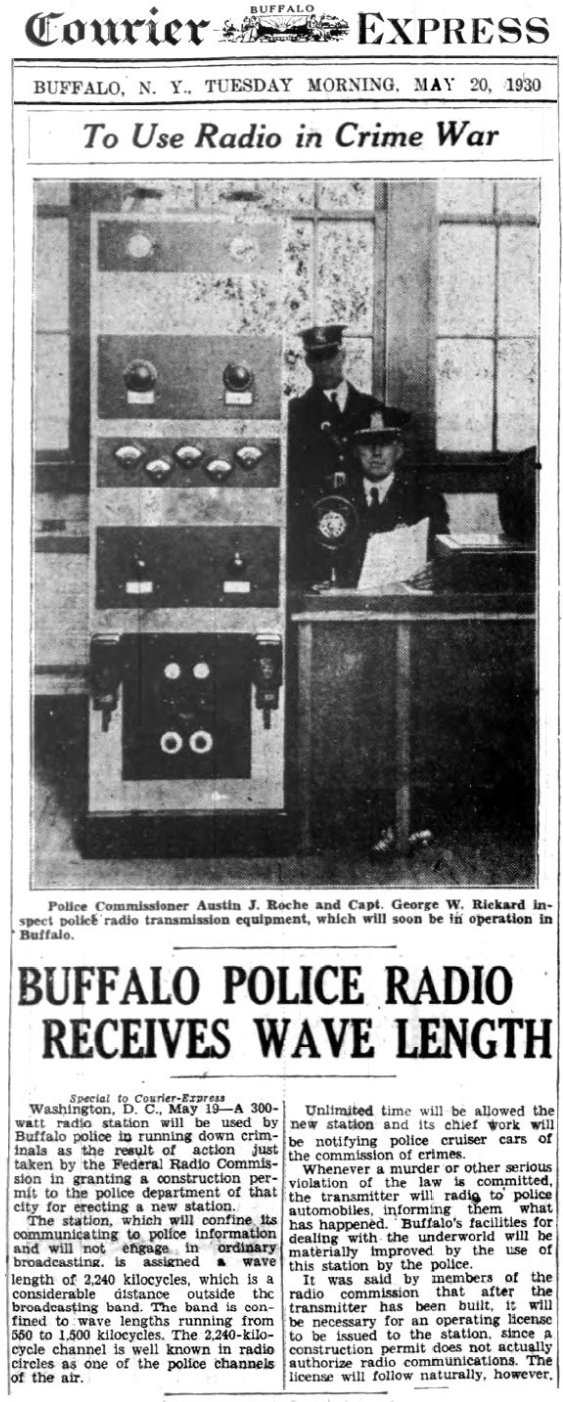
|
|
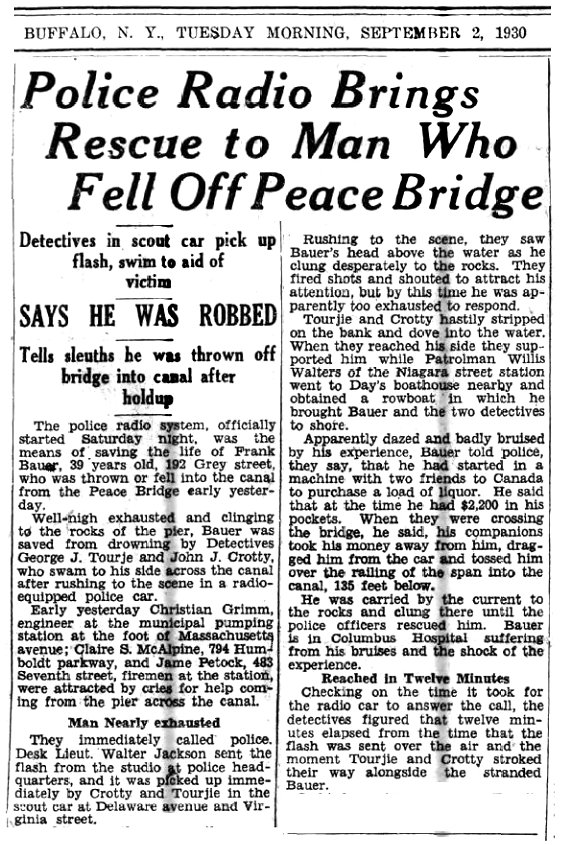
|
|
|
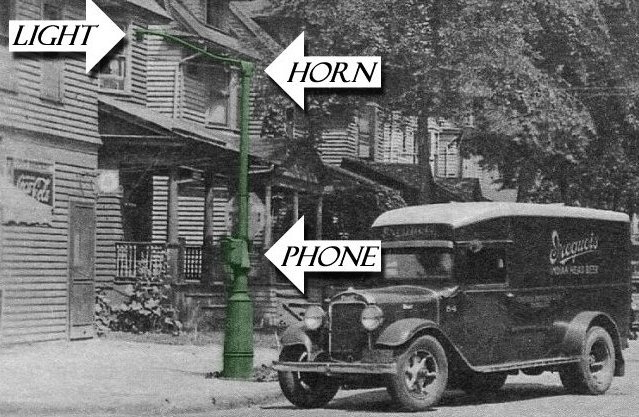
|
|
The Call Box System |
|
When the Desk Lieutenant needed to convey a
message or a call for police service to the Patrolman on his
assigned beat, he would, from the stationhouse, signal
the Patrolman by
- Activating the light
mounted on top of the call box
- Blasting the horn, also mounted on top of
the call box
The Patrolman on his beat would hear the horn
see the light turned on, then from the call box, call the
stationhouse for his message |
|
|
|
|
|
|
|
|
|
|
|
|
|
|
|
|
|
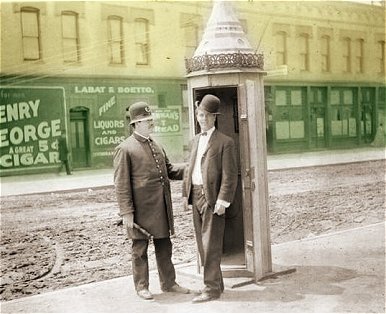
Patrol Booth |
Buffalo, NY Police Communication
Division
The Nerve Center of the entire police
department is its Communication Division.
It is the control point through which contact
is made between the police department and the public.
Absolute accuracy are of paramount importance
in this phase of the departments work, for it is the
communication division that serves as a veritable
lifeline.
Without the communications division the entire
department would be paralyzed.
A patrol call box system and patrol booths
were installed on January 10, 1888. T
he call box system provided a source of
communication between the Desk Lieutenant at the precinct
stationhouse and the Patrolman on his assigned beat.
Patrol booths, similar in size to telephone
booths, were placed throughout the city.
|
|
|
The patrol booths were used as a holding
cell for persons arrested by the patrolman on his
beat.
Arrestees were housed in the booth until a
patrol wagon would arrive and transport them to the precinct
lockup.
The Buffalo Police Departments first communication was
the Morse Telegraph adopted in 1875, which is described as a
system of communication employing electrical apparatus to
transmit and receive signals in accordance with a code of
electrical pulses.
For the next 54 years there was no changed until early in
the year of 1929 when the teletype system of communication
was developed by the New York Telephone Company and than put
in to service by the department connecting headquarters,
precincts and bureaus.
|
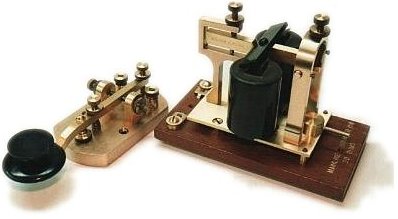 |
|
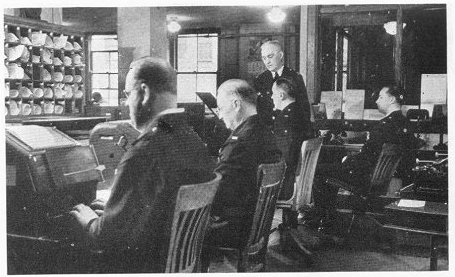
Buffalo Police Headquarters Teletype
Room
|
On September 15,
1931 the New York State Telephone Typewriter System was
installed in Police Headquarters.
This System connects with the States of Pennsylvania, New
Jersey, Connecticut and Massachusetts.
The year 1931, found the Buffalo Police Department
equipped with more communication systems than any other
police department in the world, consisting of the telephone,
the Morse telegraph, the telephone typewriter system and the
radio.
Radio Station "WMJ" which began operation On
October 3, 1930 was one of the first police broadcasting
stations in the United States to be licensed, broadcasting
at 2,422 kilocycles. |
|
| At this time only a
few police cars were equipped with receivers, and these were
of the home-made variety.
Even the transmitter had a low power.
This was only a one way communication, Patrol Officers
could receive calls, but could not "talk back" to
the dispatcher.
The first location of the radio station was in a small
room on the second floor of Seneca Vocational High
School.
Police personnel stationed on the second floor of
old police headquarters, located at Seneca and Franklin
Streets, turned over calls for service received by telephone
to the dispatchers at the school, who, in turn broadcast
them over the radio.
Radio communication soon became a real asset to police in
reaching the scenes of crimes, and steps were taken to equip
all police cars with receivers.
The number of calls broadcast greatly increased, and it
soon became necessary to increase the staff and find larger
quarters.
|
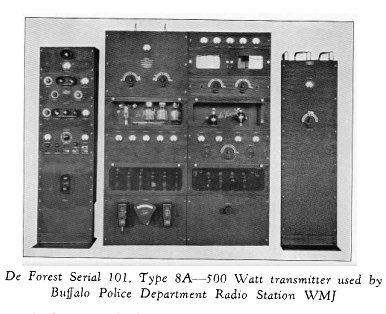 |
|
|
|
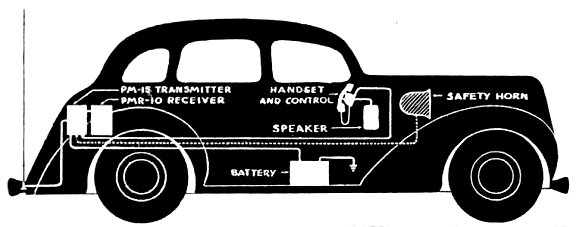 |
The radio station
was moved to the police garage on Glenwood Avenue where both
call taking and dispatching was done.
Here was the inaugurated the "TW" or Two-Way
communication between station and police cars |
|
|
|
|
|
Buffalo Police Radio Station Delaware Park
|
| In 1945 Due to the increase volume of calls
for service, it became necessary again to find larger
quarters. Police Radio "WMJ" was moved to a new
radio station located on the South Meadow Drive of Delaware
Park |
|
|
|
|
|
|
|
|
|
Special Order 296 of
1948, issued by then Police Commissioner
Thomas J. McMahon, served notice that a Central Complaint
Room had been organized and would begin operating at 8 a.m.
March 15, 1948.
From that time the order states each and every complaint
brought to the attention of the Buffalo Police Department,
by telephone, in person to a stationhouse, to a police
officer or otherwise, must be reported to the Complaint Desk
in the communications centers on the second floor of police
headquarters.
This is where the term "CD Number"
originates from.
The adoption of the Central Complaint Reporting System
insures a more complete record, more attention to the
investigation of complaints and better service to the
public.
On July 18, 1949 the department installed micro-filming
equipment and began micro-filming approximately 2,500,000
pieces of old and little used department records.
|
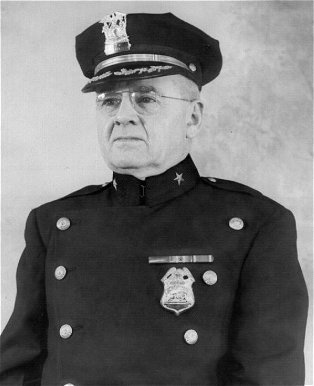
Thomas J. McMahon
Police Commissioner 1946 - 1949
|
|
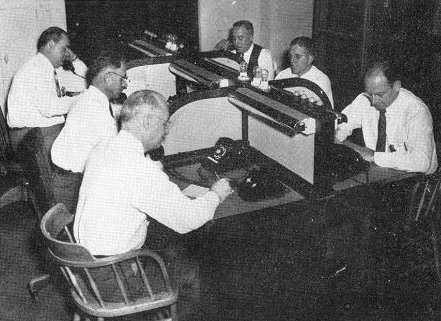 |
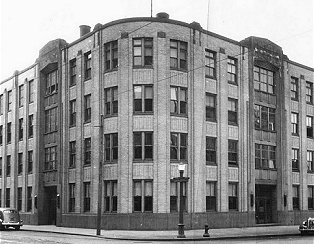 |
|
Complaint Desk Buffalo Police
Headquarters |
Buffalo Police Headquarters |
|
|
|
|
|
|
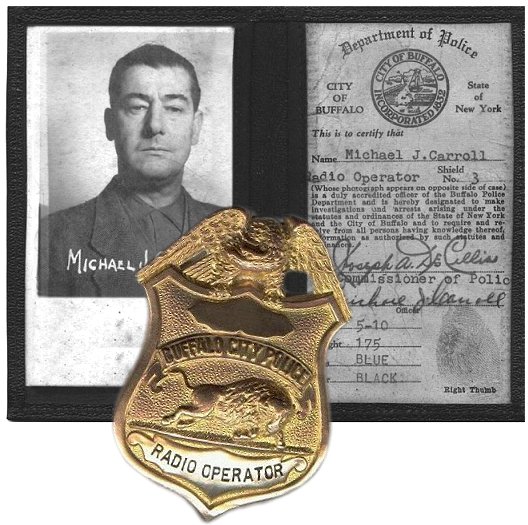
Contributed By Jim Carroll |
|
|
|
|
|
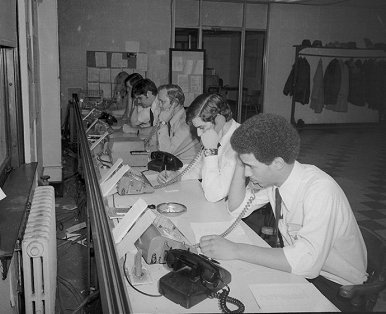
|
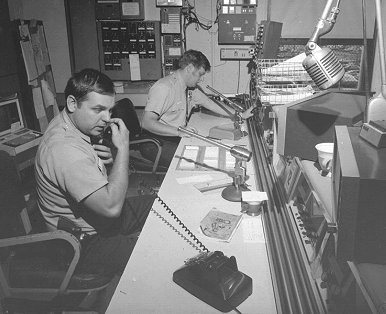
|
| In 1967
the Buffalo Police Departments first 911 System was
installed, followed by a county wide Enhanced 911 System in
1988.
In 1993 the conveyor belt that transported complaint
cards from the 911 call takers desks to the dispatchers was
turned off for the last time and a new Computer Aided
Dispatch (CAD) was implemented.
|
|
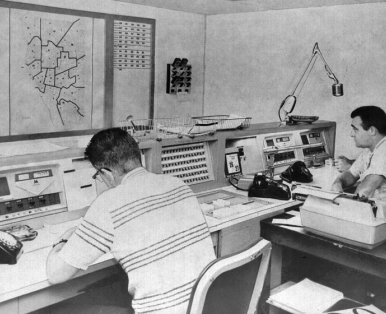
|
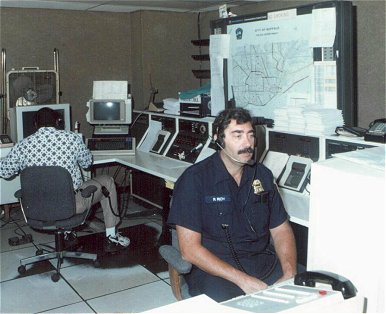
|
|
|
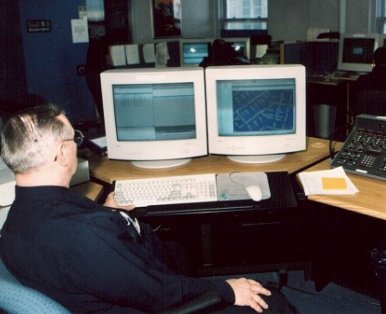
|
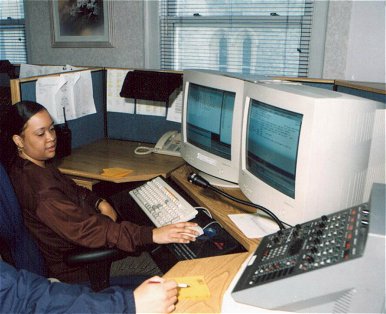
|
|
1997 the Buffalo Police Department moved into its newly
renovated Communications
Dispatch Center on the second floor of headquarters.
The
project planned and implemented by then Communications
Captain Gerald Schoenle, called for new, state-of-the-art
operating systems.
|
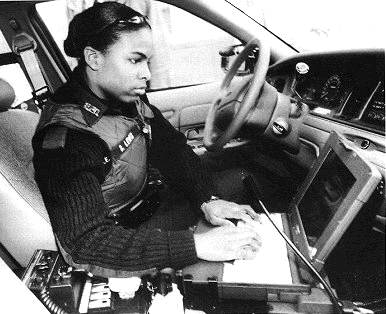 |
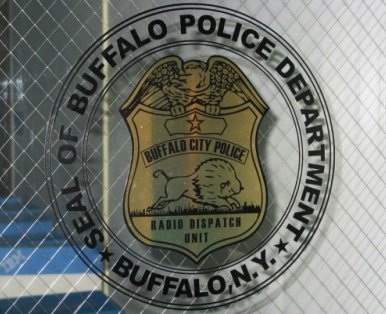
|
|
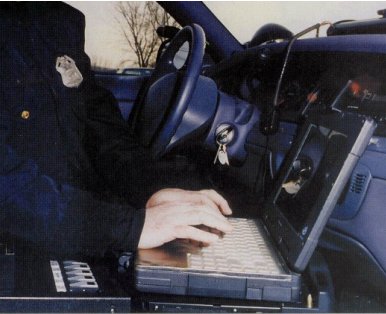
|
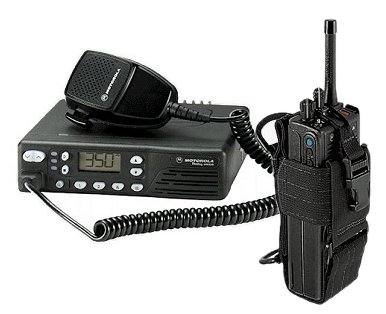
|
| In 1998 Mobil Computer Terminals (MCT's)
were installed in patrol vehicles, now allowing
dispatchers to dispatch voiceless by sending calls
directly to the patrol cars computer.
Police Officers are now able to perform plate and
license checks, lookup prior calls, communicate with
other officers via computer.
|
|
|
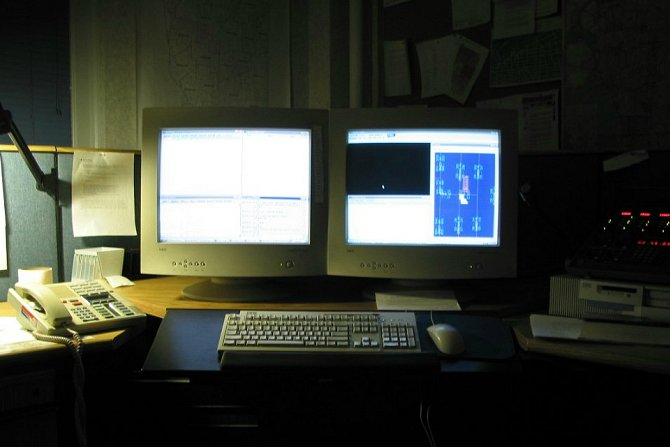
|
|
|
|
|
|
|
|
|



